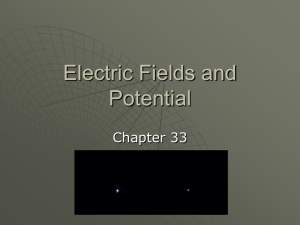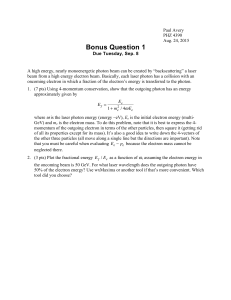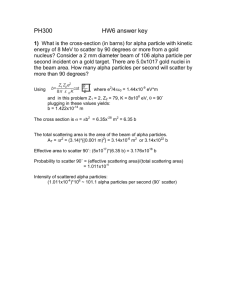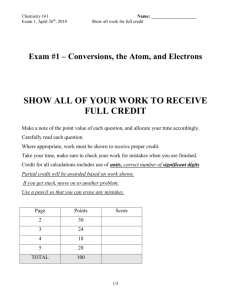MODERN PHYSICS
advertisement
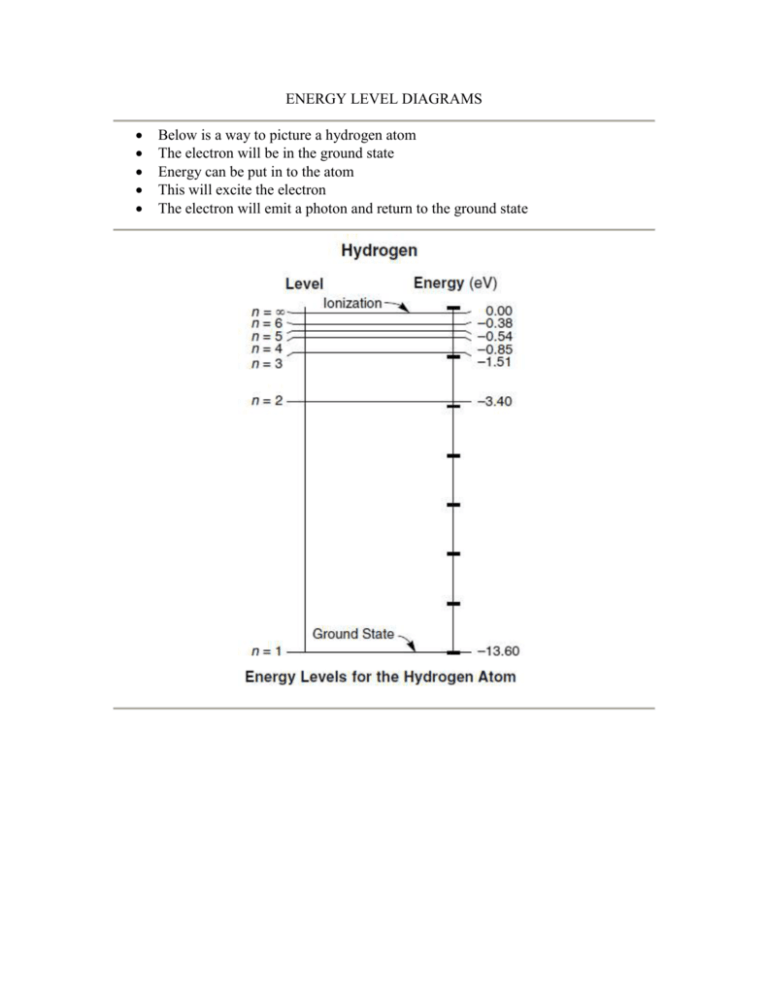
ENERGY LEVEL DIAGRAMS Below is a way to picture a hydrogen atom The electron will be in the ground state Energy can be put in to the atom This will excite the electron The electron will emit a photon and return to the ground state For Example: Say an electron is in the ground state If you put in exactly 10.2eV of energy, it will be excited to the n = 2 excited state This electron wants to return to the ground state It will do so by emitting a photon of 10.2eV Once you know the Energy of the photon, you should be able to calculate the frequency and/or the wavelength E = hf E = hc / The energies are typically negative values This is because zero is at the “top” Every element can have an electron removed, so that is made zero Each element has a different depth of a ground state For example: It’s making zero PE at the top instead of at the bottom If the electron were excited to the n = 3 energy level, 12.09eV needs to go in There are three possible photons that can be emitted A single 12.09 eV photon And two more, one that is 1.89eV and another 10.2eV Remember, all energy values need to be in Joules when you are going to use an equation that involves h (Planck’s constant) You reminder is the units for Planck’s constant are Joules times seconds The conversion is on the front of the reference tables If you are not good at conversions: o Muliply eV by 1.6x10-19J/eV to get Joules o Divide Joules by 1.6x10-19J/eV to get electronvolts


